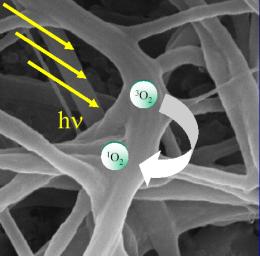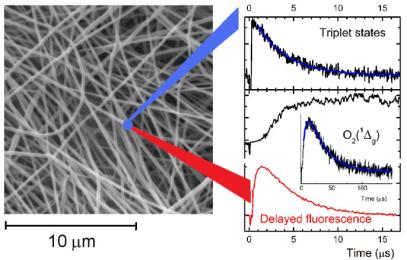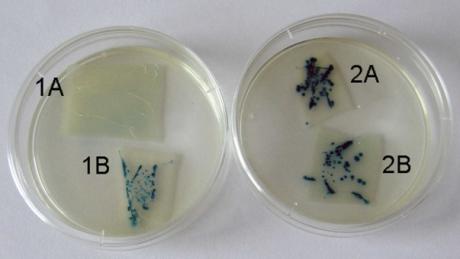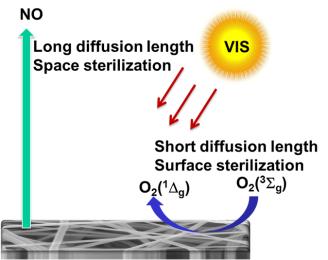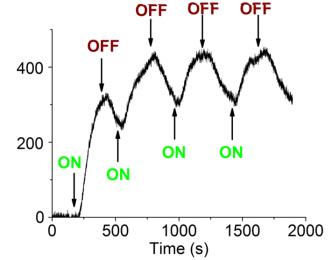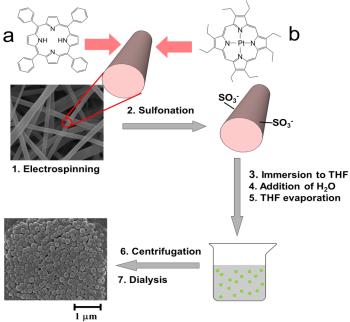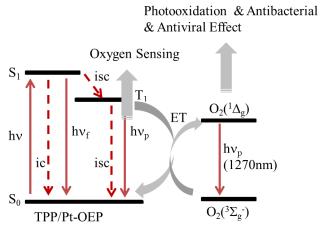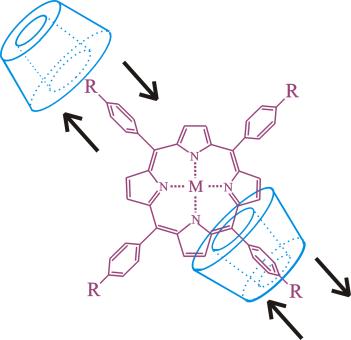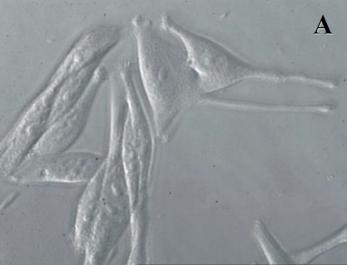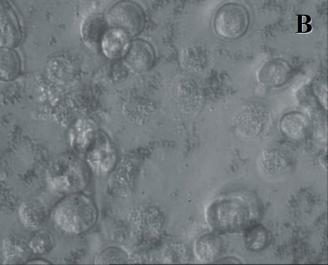Research
Main scientific interest
Chemistry and photochemistry of porphyrinoids, singlet oxygen (O2(1Δg)),
NO and I2/I3– reactions/generation/detection, host-guest interaction, smart
supramolecular systems, fotoactive polymer nanomaterials (nanofibers, nanoparticles, gels), applications
in photodynamic inactivation (PDI) of bacteria, viruses and yeasts, application
in photodynamic therapy (PDT).
Research equipment
Steady state as well as time-resolved absorption and emission spectroscopy, electrospinning device,
standard equipment for synthesis and characterization of porphyrinoids.
Examples
Photofunctional nanofiber membranes
A novel photofunctional nanofiber materials (membranes) based on immobilization of the
porphyrin photosensitizer in/on electrospun polymeric nanofibers. The nanofiber materials
produce reactive singlet oxygen O2(1Δg) after
irradiation by visible light causing that these materials have antibacterial
and antiviral properties and can be used for photooxidation reactions and
for oxygen sensing using singlet oxygen mediated delayed
fluorescence (SODF).
Photo-antibacterial surfaces of nanofiber membranes
Escherichia coli (Gram-negative)
Staphylococcus aureus (Gram-positive)
Pseudomonas aeruginosa (Gram-negative)
No bacterial resistance toward O2(1Δg) was found
Photodynamic inactivation (PDI) on the surface of the nanofiber membrane 1A toward bacteria E. coli (green spots): Agar plates with pieces nanofiber membrane with a encapsulated photosensitizer (1) and a control nanofiber membranes without photosensitizer (2) inoculated with E. coli and exposed to light (A) or kept in the dark (B)
Left picture: Simultaneous generation of NO and O2(1Δg)
Right picture: The amperometric detection of NO photoreleasing from the surface
of nanofibers. The arrows indicate switch-on and switch-off character of NO releasing triggered
by the irradiation by visible light.
Antibacterial, Antiviral & Oxygen Sensing Nanoparticles Prepared from Electrospun Materials
Supramolecular photosensitizers applied in photodynamic therapy (PDT)
Porphyrin-cyclodextrin host-guest interaction (example of supramolecular photosensitizer)
Cell line G361 human melanoma with porhyrin photosensitizer before (A)
and after (B) the visible light irradiation.
Example of photodynamic therapy (PDT).
Know-how & Technologies
- Synthesis and characterization of porphyrinoid photosensitizers
- Preparation of photoactive nanofiber materials by electrospinning generating O2(1Δg) and/or NO radicals
- Preparation of photoactive nanoparticles from nanofiber materials O2(1Δg) and/or NO radical
- Characterization of photoactive nanomaterials
- Detection methods for evaluation of (photo)generation of O2(1Δg) and/or NO radical in several media
- Antimicrobial photodynamic inactivation
Main capabilities
Controlled irradiation by several light sources (lasers, LED, lamps), steady state
and time-resolved absorption and emission spectroscopy, synthesis of porphyrinoid
photosensitizers, electrospinning, characterization of nanomaterials, chemical methods
of O2(1Δg), other ROS, NO and I2 detection,
detection of oxygen in several media, photodynamic inactivation of bacteria.
Expectations & Offers
We offer our expertise within a several range of issues related to the design,
preparation, and characterization/evaluation of photoactive supramolecular systems
and/or nanomaterials with antimicrobial photodynamic inactivation.
Requirements
We are looking for highly motivated students and for cooperation especially
in the fields of applications of photoactive nanomaterials in photocatalysis
and medicine/biomedical science.
Latest news
No news

